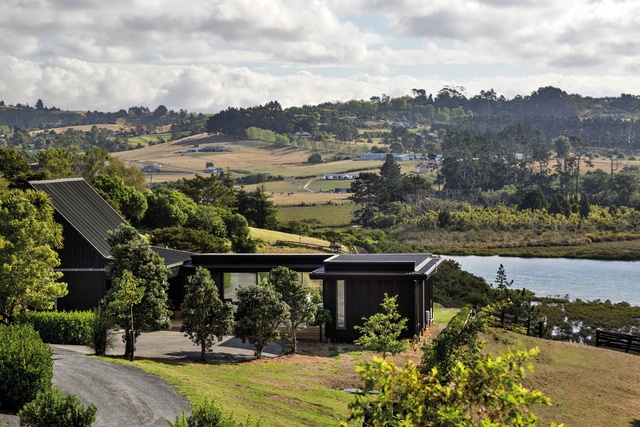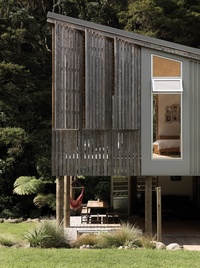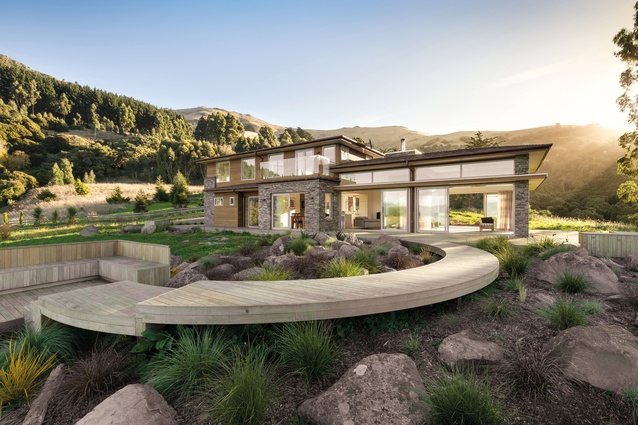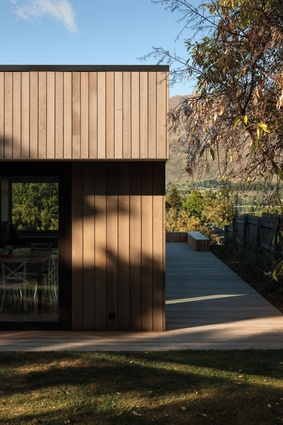The eco-ethical house: part two
Four New Zealand designers weigh in on processes and products for creating more eco-friendly homes.
Natural materials
“The client’s brief was for an eco-home using natural materials. The technical specifications align with current high-performance standards, which far exceed the building code minimums. This includes super-insulated walls, high-performance windows and an edge-insulated concrete floor slab. Oversized eaves protect the house from overheating but allow optimum natural light, views and sun access. A second, lower eave protects from excessive solar gain to all elevations of the fully glazed northern living wing, which enjoys panoramic views. The horizontal arrangement of layers grounds the partially two-storeyed dwelling, melding it into the landscape. West Coast schist bookends the building. The roof is clad in EcoStar shingles, which are made from recycled car tyres and are indistinguishable from slate. Recycled timber, including macrocarpa milled from trees on site, forms the expansive decking.”
– Bob Burnett, Bob Burnett Architecture
Uplifting spaces

“Gardner House was my first passive house and the first certified passive house in the South Island; I learned so much from it. There are Smart Panels in the walls and 220mm of polystyrene under the concrete slab. It has triple-glazed windows from Germany and a mechanical heat-recovery insulation system. Any amount of heat introduced to the house remains in the house and it keeps cool in summer by working the opposite way. As an architect, I’m about producing better buildings and uplifting spaces. What made me interested in passive house design was the amount of feedback I received from clients about the amount of energy they required to keep themselves comfortable; I think that is unacceptable. The challenge is to make energy-efficient buildings that are comfortable to live in, and attractive and architecturally notable.”
– Rafe Maclean, Rafe Maclean Architects
Old house made new

“We have a collection of energy-efficient, passive design plans called Coolhouse. This client came to us with an existing house in Whitford, which was old and cold. They wanted to retain it, as it had some history, but to extend it and make sure it was warm. They were interested in our Coolhouse plans and one of these is used for a pavilion extension for their teenaged daughter. Between this and the existing wing, a living pavilion is provided with glazing on both sides, opening to two decks: one with shelter from the sun and the other with shelter from the wind. The extension has an HRV system that can be sealed off completely if required. The house is double glazed with no thermal bridging, and the R-values (thermal resistance) are up-rated in the walls and roof. It’s a high-tech system for a simple building, with little extra cost, but it makes the difference between doing it well or doing it badly.”
– Darren Jessop, Jessop Architects

Solar effects
“The clients of Wedgie both work overseas on superyachts for two-thirds of the year. This project is a crash pad for when they’re back in New Zealand. As a result, it’s pretty small: only 60m2 internally. The idea is that it has a ‘New Zealand feeling’ – a spot to which they can come back and recuperate from being overseas working. It’s only 200m from the Tutukaka Marina but we pointed it away from the marina to gain privacy and face the sun. We normally start with the passive aspects so it’s oriented to gain as much sun as possible in the winter. There are big overhangs in the north and west to stop it from overheating in summer. The timber screen that runs right down the western face of the building blocks the light from the west, which can be oppressive, and is slatted to allow a breeze through. All the timber is sourced from New Zealand; it’s a mixture of red beech, Lawson cypress and macrocarpa.”
– Tim Gittos, Spacecraft Architects
A version of this article first appeared in Houses magazine.














